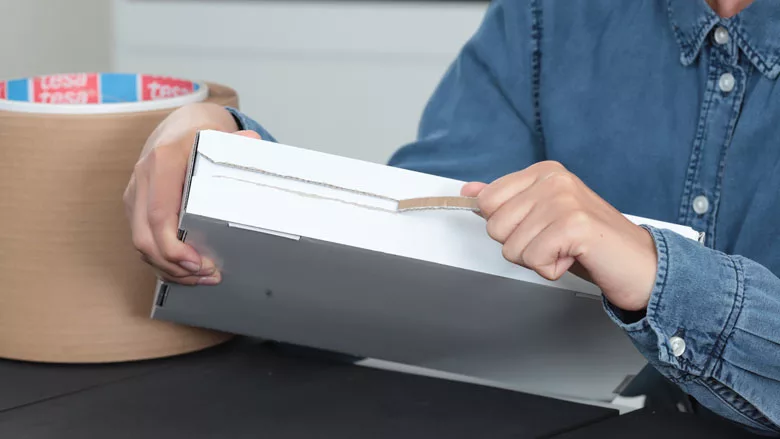TESA: Paper-Based Tear Tape

Paper-based tear tape from tesa. Courtesy of tesa.
Adhesives provider, tesa, has introduced a new type of tear tape, tesa® 51344. Conventional tear tape is a thin strip of adhesive material applied to packaging to facilitate easy opening. It typically utilizes a plastic backing material, such as polypropylene, to create a controlled tear, allowing the consumer to easily open the package without the need for additional tools or excessive force. However, it is often the only component of paper-based packaging that is not recyclable.
Filling materials and adhesive tapes must be meticulously separated before recycling of paper-based packages can begin. The new product from tesa comes from sustainably managed sources and can be disposed of along with the paperboard material, confirmed by a recyclability test according to PTS-RH 021.
The paper-based tear tape has been proven to perform on a wide range of materials, from paper mailers to 6mm E-flutes, demonstrating excellent bonding strength and reliable opening performance. The tape’s innovative, strong paper backing is combined with a high-tack adhesive, ensuring a reliable bond.
According to tesa, the company is one of very few manufacturers in the market currently offering customers a paper-based tape solution for this application. The new tesa 51344 marks the beginning of a series of product adaptations for the tesa corrugated board design tape assortment.
"With this new product solution, we present our customers with a fully integrated and more sustainable solution for the production of packaging and cardboard shipping material. We manufacture tesa 51344 without solvents and the paper used comes from controlled sources," said Frank Domann, corporate marketing director of industrial markets at tesa. "The development of products that help promote sustainability is a strategically important goal for tesa. And we also want to support our customers and partners in achieving their own sustainability goals. With tesa 51344, our customers may take advantage of a more sustainable product for their manufacturing process, while also improving the ecological balance of shipping boxes or envelopes."
To learn more, visit www.tesa.com.
Looking for a reprint of this article?
From high-res PDFs to custom plaques, order your copy today!




